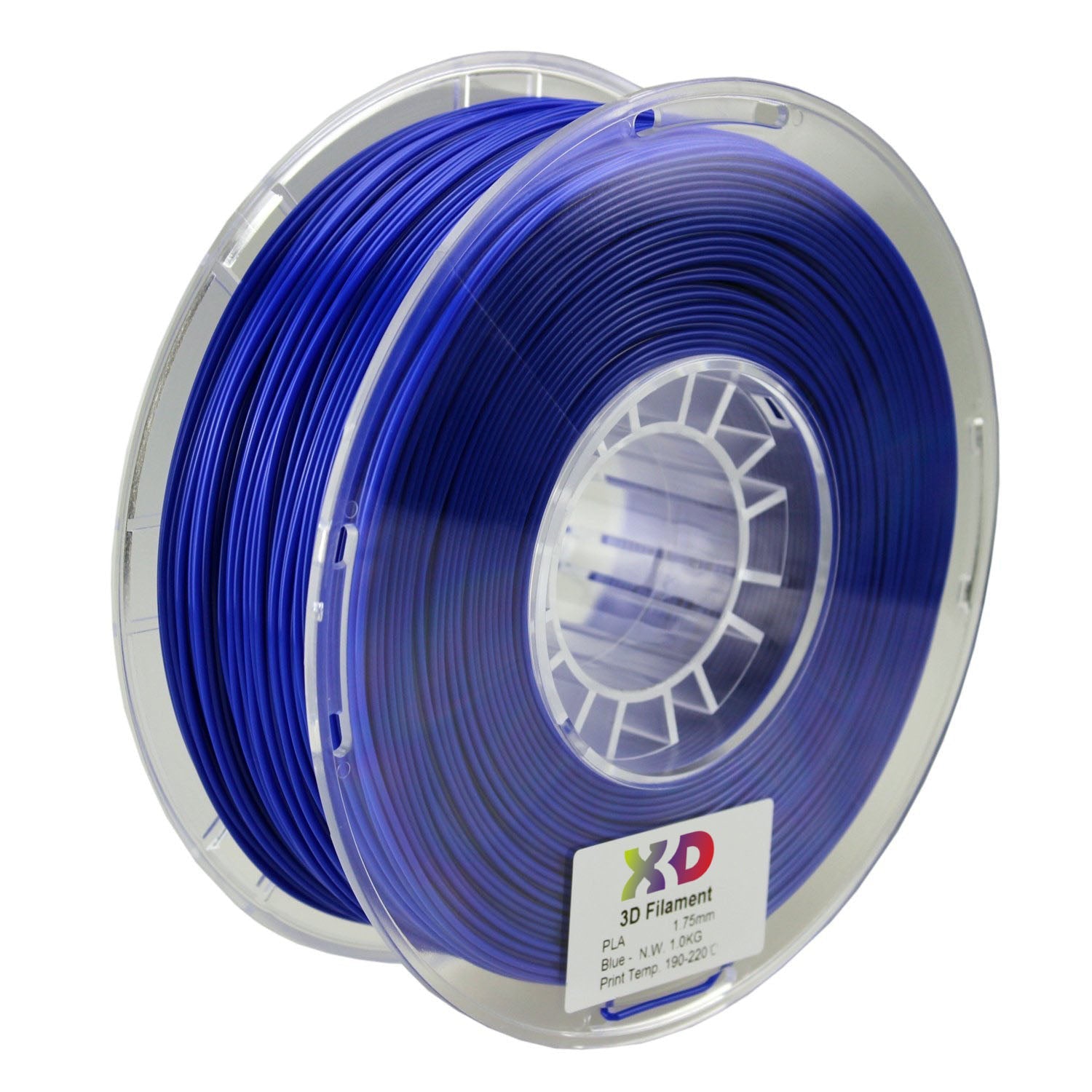Everything You Need to Know about High-Quality PLA Filaments
If you’re just starting out with 3D printing, using high quality PLA filaments for your printing projects is the way to go. They are one of, if not the most, popular 3D printing filaments to use Fused Deposition Modelling (FDM) desktop technology. Find out why high-quality PLA filaments are the best for beginners.
Get up Close and Personal with X3D’s High-Quality PLA Filaments
What are high-quality PLA filaments exactly?
PLA filaments are made of Polylactic Acid, a biodegradable thermoplastic polymer sourced from renewable resources, such as corn starch and sugar cane, which lends it a sweet scent while printing. It is environmentally friendly because it decomposes after three to six months versus the thousands of years that other thermoplastic materials require.
Pros of High-Quality PLA Filaments
- Easy to print: When you print with high-quality PLA filaments, you will rarely come across issues as they typically don’t warp or clog the nozzles. It also requires a low temperature.
- Accurate surface detail: Since high-quality PLA filaments are not prone to warping, blobbing, clogging and other problems, they can produce prints that are faithful to your design. Its low-temperature melting point also results in sharper details and features.
- Painless post-processing: If you think the surface texture of your print needs a bit of improvement, you can simply trim or sand it.
- Eco-friendly: High-quality PLA filaments are biodegradable, so you don’t have to worry about it polluting our oceans or lingering in the environment.
- Diverse colour and blend options: High-quality PLA filaments are made of materials that are easily pigmented so that they can be transformed into various colours and blends.
Cons of High-Quality PLA Filaments
- Low heat-resistance: Due to its low-temperature melting point, high-quality PLA filaments are not the best materials for use in parts that are exposed to constant heat.
- Brittle: Most PLA filaments break down under extreme pressure, so you would be better off using industrial PLA such as Volcano PLA.
- Short life-span: High-quality PLA filaments can only last for up to six months.
Typical Print Settings of High-Quality PLA Filaments
High-quality PLA filaments thrive in lower temperatures. Although print settings may vary depending on the filament brand and blend, as well as the 3D printer used, the following parameters are the general advisable settings for high-quality PLA filaments.
Print temperature: 190 – 210C
Heatbed? Unnecessary
Applications of High-Quality PLA filaments
With the vast selection of colours and blends of high-quality PLA filaments, the sky’s the limit with the rapid prototypes and visual prints you can create. These filaments are typically used for containers, figurines, characters, models, and toys.
X3D’s High-Quality PLA filaments Explained
X3D only has the very best high-quality PLA filaments in its selection. Read below to find out what makes each PLA filament special.
X3D Pro PLA – 1kg

The X3D Pro PLA filament displays tight tolerance for consistently stable prints and feeding. They comply with RoHS standards and tested for quality. They come in one option, the X3D Pro PLA 1.75mm
X3D Pro Translucent PLA – 1kg

The X3D Pro Translucent PLA are high-quality PLA filaments that create prints that have a frosted glass look. It also comes in the X3D Pro Translucent PLA 3.00mm option.
X3D Pro Glow In The Dark PLA – 1kg

Make sure that your prints are still visible in the dark with the X3D Pro Glow In The Dark PLA. They have two types of thicknesses: 1.75 mm and 3.00 mm.
PolyMax PLA

PolyMax PLA is the improved form of PLA filament. It has the strength of ABS with all the positive features of typical PLA filaments such as its ease of printing and accurate surface details. It is 8-9 times stronger against impact than other PLA filaments. It was also created with the use of Jam-Free™ technology.
Volcano PLA

Volcano PLA is one of the high-quality PLA filaments that have the same heat resistance and mechanical properties as ABS. It is an industrial-grade filament, which means it can keep up with high printing speeds and the impact of industrial applications.

